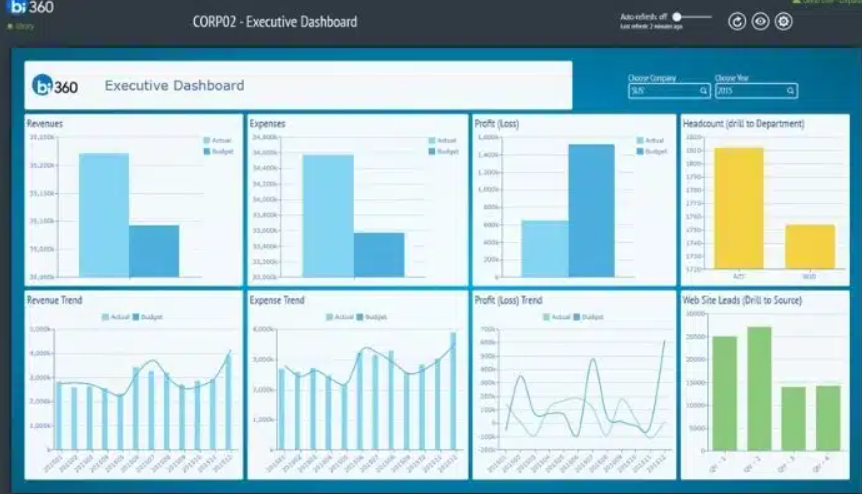In the rapidly evolving landscape of enterprise resource planning (ERP) systems, Sage X3 has emerged as a notable solution, particularly for growing mid-market businesses. As organizations seek to streamline their operations, improve decision-making, and scale efficiently, the choice of an ERP system becomes crucial. Sage X3, developed by the global technology company Sage Group, positions itself as a comprehensive, flexible, and scalable ERP solution designed to meet the complex needs of expanding businesses across various industries.
This review aims to provide essential insights into Sage X3, exploring its key features, strengths, potential limitations, and overall value proposition for growing businesses. By examining Sage X3 through the lens of modern business requirements, we can assess its capability to support organizations in their growth trajectories and digital transformation journeys.

Core Functionalities and Modules of Sage X3
Sage X3 offers a wide range of functionalities designed to cover the core business processes of mid-market companies. The system is modular, allowing businesses to implement the features most relevant to their operations. Key modules and functionalities include:
- Financial Management:
- General ledger, accounts payable, and accounts receivable
- Multi-company and multi-currency support
- Fixed asset management
- Financial reporting and analytics
- Supply Chain Management:
- Inventory control and warehouse management
- Procurement and purchasing
- Sales order management
- Distribution and logistics
- Production Management:
- Bill of materials and product configuration
- Production planning and scheduling
- Quality control and management
- Shop floor control
- Project Management:
- Project costing and billing
- Time and expense tracking
- Resource allocation and management
- Customer Relationship Management (CRM):
- Lead and opportunity management
- Customer service and support
- Marketing campaign management
- Business Intelligence and Reporting:
- Real-time dashboards and analytics
- Customizable reporting tools
- Data visualization capabilities
- Human Resource Management:
- Employee information management
- Payroll processing (in select regions)
- Performance management
These modules are designed to work seamlessly together, providing a unified view of business operations. The modularity of Sage X3 allows businesses to start with essential functionalities and add more as they grow, making it a scalable solution for expanding organizations.
User Experience and Interface Design
The user experience (UX) and interface design of an ERP system play a crucial role in its adoption and effective use within an organization. Sage X3 has made significant strides in this area, offering a modern and intuitive interface that aims to enhance user productivity and satisfaction.
Key aspects of Sage X3’s user experience include:
- Web-based Interface: Sage X3 utilizes a web-based interface, allowing users to access the system from various devices and browsers without the need for complex client installations.
- Customizable Dashboards: Users can create personalized dashboards that display relevant KPIs, reports, and tasks, providing quick access to critical information.
- Role-based Access: The system offers role-based access controls, ensuring that users see only the information and functionalities relevant to their job functions.
- Intuitive Navigation: Sage X3 employs a menu-driven navigation system complemented by search functionality, making it easier for users to find the features they need.
- Mobile Accessibility: With mobile apps available for iOS and Android devices, Sage X3 enables users to access key functionalities on the go.
- Contextual Help: The system provides in-context help and guidance, assisting users in navigating complex processes and reducing the learning curve.
While Sage X3’s interface is generally considered user-friendly, some users may find certain areas of the system complex, particularly when dealing with advanced functionalities. The learning curve can be steeper for users transitioning from simpler accounting or ERP systems. However, Sage offers comprehensive training resources and documentation to support user adoption.
Implementation and Scalability
The implementation process and scalability of an ERP system are critical factors for growing businesses. Sage X3 offers flexibility in its deployment options and is designed to scale with business growth.
Implementation Considerations:
- Deployment Options: Sage X3 can be deployed on-premises, in the cloud, or in a hybrid environment, allowing businesses to choose the model that best fits their IT strategy and resources.
- Implementation Methodology: Sage and its partners typically follow a structured implementation methodology, which includes phases such as discovery, design, development, testing, and go-live.
- Customization Capabilities: The system offers extensive customization options, allowing businesses to tailor the software to their specific needs without heavy coding requirements.
- Integration: Sage X3 provides APIs and integration tools to connect with other business systems, though the complexity of integration can vary depending on the systems involved.
Scalability Features:
- Multi-entity Management: The system supports multi-company, multi-site, and multi-language operations, making it suitable for businesses with complex organizational structures or international operations.
- Performance Optimization: Sage X3 is designed to handle large transaction volumes and can be optimized for performance as the business grows.
- Modular Expansion: The ability to add modules and users as needed allows businesses to scale their ERP capabilities in line with their growth.
- Cloud Scalability: For cloud deployments, Sage X3 leverages cloud infrastructure to provide scalable resources that can be adjusted based on business needs.
While Sage X3 offers robust scalability features, businesses should carefully plan their implementation and growth strategies to ensure the system can meet their evolving needs. Proper planning and engagement with experienced implementation partners can significantly impact the success and scalability of a Sage X3 deployment.
Industry-Specific Capabilities and Customization
One of Sage X3’s strengths lies in its ability to cater to the specific needs of various industries while offering customization options for unique business requirements. This combination of industry-specific capabilities and flexibility makes it an attractive option for growing businesses across different sectors.
Industry-Specific Features:
- Manufacturing: Advanced production planning, quality control, and lot traceability features cater to the needs of discrete and process manufacturers.
- Distribution: Robust inventory management, demand planning, and multi-warehouse capabilities support wholesale and distribution businesses.
- Services: Project management, time and expense tracking, and resource allocation tools are well-suited for professional services organizations.
- Food and Beverage: Lot tracking, recipe management, and compliance features address the specific requirements of food and beverage manufacturers.
- Chemical: Support for formula management, quality control, and regulatory compliance makes Sage X3 suitable for chemical manufacturers.
Customization Capabilities:
- Personalization: Users can personalize their interfaces, reports, and dashboards without technical expertise.
- Configuration: System administrators can configure workflows, business rules, and data structures to match specific business processes.
- Development Platform: Sage X3 includes a development platform that allows for more extensive customizations and the creation of add-on applications.
- Integration Framework: The system’s integration capabilities enable businesses to connect Sage X3 with industry-specific third-party applications.
While Sage X3 offers significant flexibility, it’s important to note that excessive customization can complicate future upgrades and support. Businesses should strive to balance customization with the use of standard features to ensure long-term sustainability and ease of maintenance.
Reporting, Analytics, and Business Intelligence
In today’s data-driven business environment, the reporting and analytics capabilities of an ERP system are crucial for informed decision-making. Sage X3 offers a range of tools and features designed to provide businesses with insights into their operations and financial performance.
Key Reporting and Analytics Features:
- Standard Reports: Sage X3 comes with a library of pre-built reports covering various business functions, which can be easily customized to meet specific needs.
- Real-time Dashboards: Users can create and customize dashboards that display key performance indicators (KPIs) and critical business metrics in real-time.
- Ad-hoc Reporting: The system includes tools for users to create ad-hoc reports without requiring technical expertise, enabling quick access to needed information.
- Business Intelligence Integration: Sage X3 integrates with popular business intelligence tools, allowing for more advanced data analysis and visualization.
- Financial Reporting: Robust financial reporting capabilities support the creation of standard financial statements as well as custom financial reports.
- Drill-down Functionality: Users can drill down from summary data to detailed transactions, providing deeper insights into business operations.
- Data Export: Easy export of data to tools like Microsoft Excel facilitates further analysis and report customization.
While Sage X3’s reporting and analytics capabilities are generally strong, some users may find that more advanced business intelligence needs require additional third-party tools or customizations. However, for most growing businesses, the built-in capabilities provide a solid foundation for data-driven decision-making.
Support, Training, and Community Resources
The availability of support, training, and community resources can significantly impact the success of an ERP implementation and ongoing use. Sage provides a range of resources to support Sage X3 users:
Support Options:
- Standard Support: Sage offers standard support packages that include access to technical support, software updates, and online resources.
- Premium Support: Enhanced support options are available, offering features like faster response times and dedicated support contacts.
- Partner Support: Many businesses work with Sage partners who provide localized, specialized support.
Training Resources:
- Online Learning: Sage offers a variety of online training courses and tutorials covering different aspects of Sage X3.
- Certification Programs: Certification programs are available for users and administrators, helping to build in-house expertise.
- Training Services: Customized training programs can be arranged through Sage or its partners.
Community Resources:
- Sage City: An online community forum where users can ask questions, share experiences, and access knowledge base articles.
- User Groups: Regional and industry-specific user groups provide opportunities for networking and knowledge sharing.
- Annual Conferences: Sage hosts annual conferences that offer learning and networking opportunities for Sage X3 users.
Documentation:
- User Guides: Comprehensive user guides and documentation are available for all modules and functionalities.
- Knowledge Base: A searchable knowledge base provides solutions to common issues and best practices.
While the availability of resources is generally good, some users report that the quality and accessibility of support can vary, particularly for more complex issues. Building a strong relationship with a knowledgeable Sage partner can often be beneficial in addressing support and training needs effectively.
Conclusion: Is Sage X3 Right for Your Growing Business?
Sage X3 presents a compelling option for mid-market businesses looking for a comprehensive and scalable ERP solution. Its strengths lie in its broad functionality, industry-specific capabilities, and flexibility in deployment and customization. The system’s ability to support multi-entity and multi-national operations makes it particularly suitable for businesses with complex structures or international ambitions.
Key considerations for businesses evaluating Sage X3 include:
- Functional Fit: Assess how well Sage X3’s features align with your specific business processes and industry requirements.
- Scalability: Consider your growth projections and ensure that Sage X3 can scale to meet your future needs.
- Implementation Complexity: Evaluate your organization’s readiness for a complex ERP implementation and the resources required.
- Total Cost of Ownership: Factor in not just the initial licensing costs, but also implementation, customization, training, and ongoing support expenses.
- User Adoption: Consider the user-friendliness of the system and the change management efforts required to ensure successful adoption.
- Integration Needs: Assess how well Sage X3 can integrate with your existing systems and any planned future technologies.
- Partner Ecosystem: Evaluate the availability of experienced implementation partners in your region or industry.
While Sage X3 may be more complex and potentially more expensive than some entry-level ERP solutions, its robust features and scalability make it a strong contender for growing businesses that require advanced functionalities and the ability to support complex operations.
Ultimately, the decision to implement Sage X3 should be based on a thorough evaluation of your business needs, growth plans, and resources. For many growing mid-market businesses, particularly those in manufacturing, distribution, and services industries, Sage X3 can provide the comprehensive ERP capabilities needed to support efficient operations and informed decision-making in an increasingly competitive business landscape.

